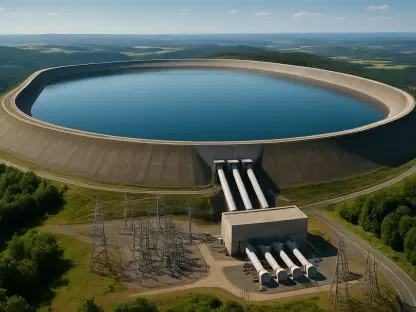In early 2025, two notable events underscored the balance required to achieve energy dominance in the United States: Kendrick Lamar’s Grammy wins and Pennsylvania Governor Josh Shapiro’s response to a PJM capacity auction price surge. This article explores how to foster energy infrastructure growth while ensuring equitable benefits across all customer segments.
The PJM Auction Crisis
Governor Shapiro’s Response
Governor Shapiro’s response to the PJM auction crisis was driven by a dramatic rise in capacity auction prices, skyrocketing from $28.92/MW-day to $269.92/MW-day. The escalation resulted in a staggering total cost increase from $2.2 billion to $14.7 billion. In an effort to shield his constituents from this significant financial burden, Shapiro secured price caps and other concessions, although these measures still require approval from PJM and the Federal Energy Regulatory Commission. Shapiro’s actions highlight the necessity for proactive governance and swift intervention to prevent economic strain on small customers.
This unprecedented price hike not only underscores the volatility within energy markets but also raises concerns about the long-term sustainability of current energy policies. As the energy landscape evolves, state leaders must navigate the complexities of ensuring affordable and reliable energy while fostering economic growth and innovation. Shapiro’s response serves as a crucial case study in balancing the competing demands of energy market stability and customer protection, especially for vulnerable populations who may be disproportionately affected by such price fluctuations.
Broader Implications
The rise in PJM capacity auction prices sheds light on broader questions regarding the true nature of achieving energy dominance in the United States. At the core of these questions is the need to build infrastructure capable of delivering safe, reliable, and increasingly clean energy while maintaining rate stability for all customers. The contemporary energy landscape is undergoing a transformative shift, marked by substantial load growth. This growth is pivotal for maintaining the nation’s economic strength and its competitive edge in global technological advancements, particularly in fields like artificial intelligence.
The challenge lies in managing this load growth without exacerbating economic disparities. Ensuring that the benefits of energy advancements reach all segments of the population is essential for fostering a more inclusive and equitable energy future. As the country aims to bolster its energy infrastructure, it must also prioritize policies that prevent the marginalization of small customers. The objective is to support a holistic transition that not only addresses immediate energy needs but also lays the groundwork for sustained economic and environmental resilience.
Managing Load Growth
Avoiding a Divided Energy System
Effectively managing load growth is critical to preventing the emergence of a divided energy system characterized by “haves” and “have-nots.” Traditional solutions such as co-location, direct access, or adopting a national competitive market have been critiqued as inadequate in addressing the complexities of modern energy demands. Pennsylvania’s struggles with its competitive market offer a cautionary tale, illustrating the potential pitfalls of these approaches. The state’s experiences underscore the importance of a more integrated and strategic approach to energy planning.
The competitive market models often fail to account for the unique needs and constraints of different customer segments. Small customers, in particular, may find themselves at a disadvantage, unable to compete with larger entities that can secure more favorable terms. To avoid such disparities, a comprehensive and inclusive approach to load growth is necessary. This involves not only addressing the immediate logistical challenges but also ensuring that the policies in place support long-term equity and sustainability across the entire energy system.
Advocating for Integrated Resource Planning
The advocacy for integrated resource planning (IRP) as a superior approach to accommodating new loads is rooted in its holistic consideration of the entire system’s needs. IRP has historically been a cornerstone of the energy transition, supporting innovations in generation technology and benefiting from favorable gas prices. By considering the full spectrum of energy demands and resources, IRP provides a more coordinated and balanced framework for managing load growth. However, the evolving energy landscape demands that IRP adapt to be quicker, nimbler, and more flexible.
Meeting the demands of large loads without long regulatory delays is crucial for maintaining a balanced energy system that serves all customers. This might entail revising traditional regulatory frameworks, introducing expedited review processes, and leveraging technology to streamline operations. By making these adjustments, IRP can continue to play a vital role in guiding the energy transition in a way that supports broad-based economic growth and technological progress. The focus remains on ensuring that the benefits of new energy developments are distributed equitably, preventing the marginalization of smaller customer segments.
Adapting Integrated Resource Planning
New Contract Norms and Risk-Sharing Mechanisms
Adapting integrated resource planning to accommodate new and increasingly large loads could include the introduction of new contract norms and risk-sharing mechanisms. These adaptations are essential for creating a balanced and responsive energy system capable of integrating large energy loads effectively. New contract norms might involve more flexible terms that account for rapid technological advancements and changing market dynamics. Risk-sharing mechanisms could distribute potential financial impacts more equitably among stakeholders, ensuring that both large and small customers benefit from the growth in energy infrastructure.
Such changes are not mere procedural adjustments but represent a fundamental shift in how energy resources are managed and allocated. By adopting these new approaches, the energy sector can better navigate the challenges posed by substantial load growth. The goal is to create an energy system that remains resilient and adaptable in the face of evolving demands while promoting fair economic growth. This requires a commitment to transparency, collaboration, and continuous improvement in energy planning and management practices.
Preventing a Two-Tier Rate System
The findings of recent energy studies suggest that embracing integrated resource planning and ensuring that economic development and load growth benefit all customers can help prevent scenarios like the PJM auction crisis. Avoiding a two-tier rate system, where only some customers can afford direct access and co-location, is critical for achieving an inclusive form of energy dominance. Equitable access to energy resources and benefits ensures that no customer segment is left behind, fostering a more cohesive and resilient energy economy.
By prioritizing inclusive growth, the energy sector can build a foundation for long-term sustainability and stability. Integrated resource planning, when implemented effectively, provides a robust framework for managing load growth in a way that supports the diverse needs of all customers. This approach recognizes that energy infrastructure and market regulations must evolve to meet changing demands while promoting fairness and equity. Achieving this balance is essential for creating an energy future that is both economically and environmentally sustainable.
Achieving Inclusive Energy Dominance
Policies for Inclusive Growth
The importance of integrated resource planning in achieving a balanced and equitable energy future cannot be overstated. It advocates for policies and practices designed to prevent the marginalization of small customers, ensuring that the energy transition leads to broad-based benefits. By fostering a policy environment that supports inclusive growth, the United States can achieve energy dominance while promoting social and economic equity. This requires a concerted effort to align regulatory frameworks, market incentives, and technological innovations with the needs of all customer segments.
Inclusive growth policies might involve targeted support for renewable energy projects in underserved areas, incentives for energy efficiency improvements, and programs that facilitate greater participation in energy markets by small businesses and residential customers. By implementing such measures, policymakers can help ensure that the benefits of the energy transition are widely shared, contributing to a more just and resilient energy system. These efforts must be complemented by ongoing engagement with stakeholders to address emerging challenges and opportunities in the energy sector.
Learning from State Experiences
In early 2025, two significant events highlighted the delicate balance needed to achieve energy dominance in the United States: Kendrick Lamar’s remarkable wins at the Grammy Awards and a crucial response from Pennsylvania Governor Josh Shapiro. The governor had to address an unexpected rise in prices following a PJM capacity auction. This article delves into the strategies needed to promote growth in energy infrastructure while ensuring that all customer segments receive fair and equitable benefits. To achieve energy dominance, it’s crucial to innovate and expand our infrastructure with a focus on sustainability, affordability, and inclusiveness. Policymakers must work closely with industry leaders to address the challenges posed by market fluctuations, technological advancements, and economic disparities. By investing in renewable resources, modernizing the grid, and creating policies that prioritize access and equity, the United States can move toward a future where energy is both abundant and accessible for everyone, regardless of their economic standing.









